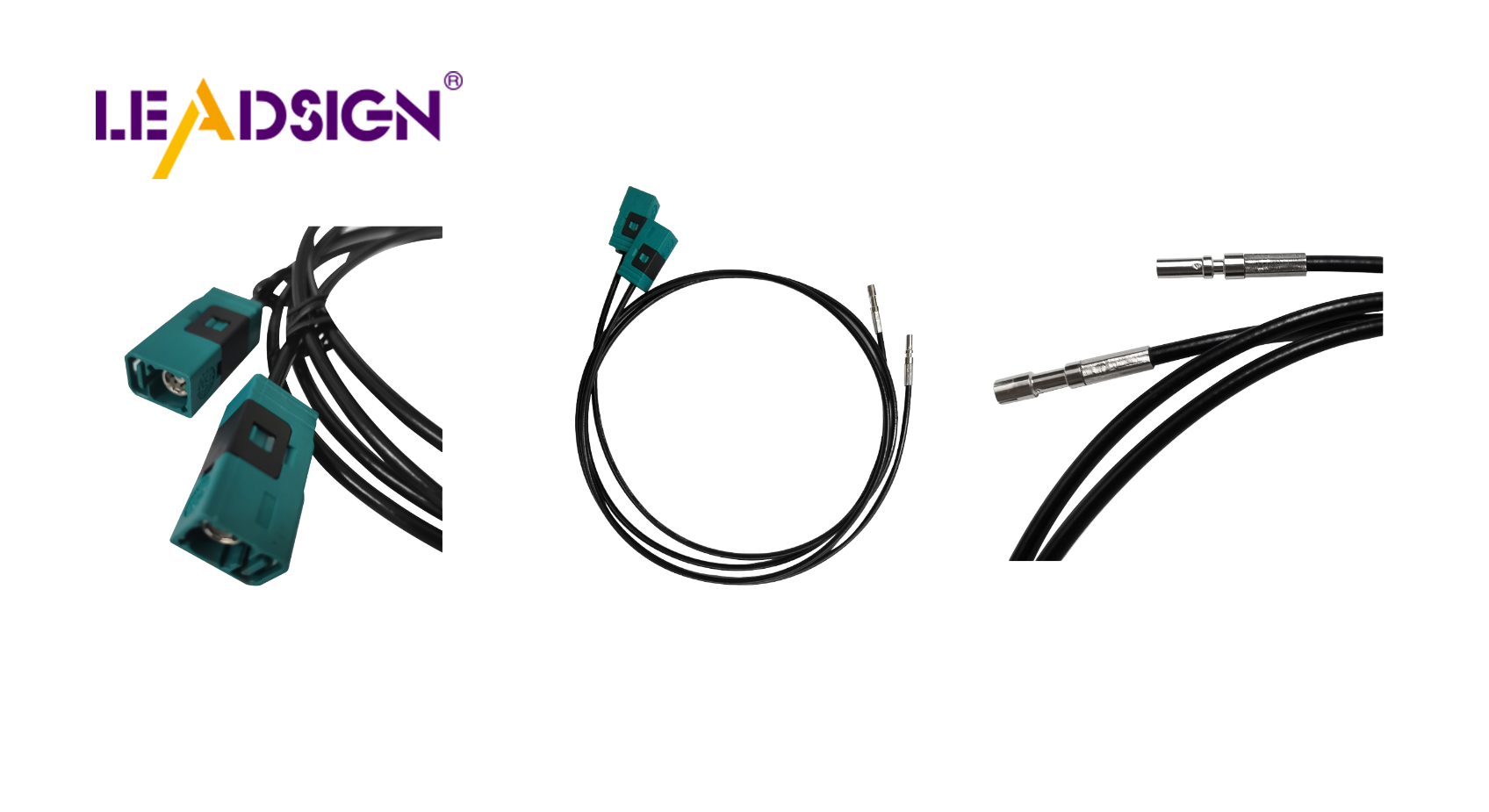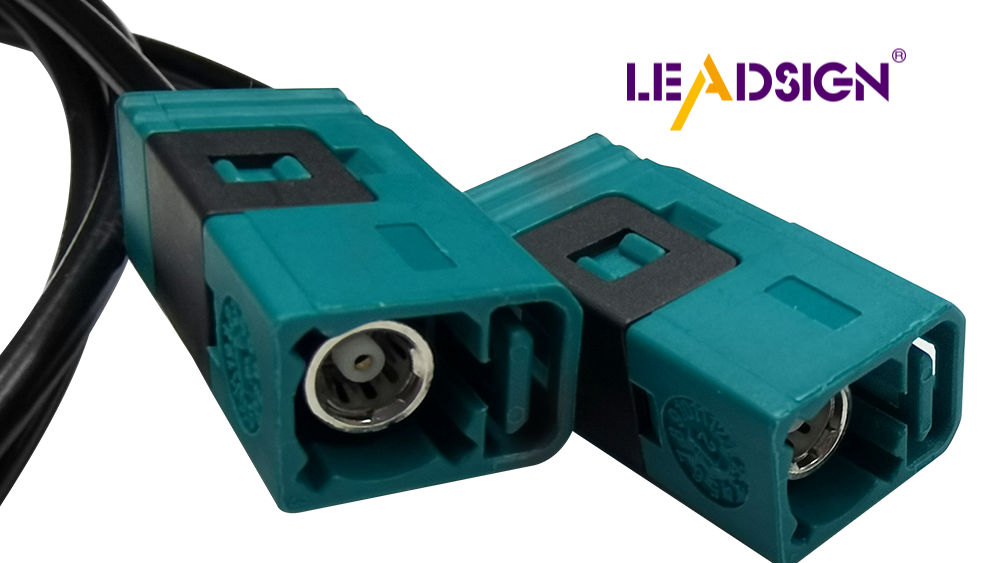How to Identify Automotive Electrical Connectors Types

Understanding automotive electrical connectors types is crucial for repairing vehicles. These connectors facilitate communication between car components. The connector market is projected to expand from USD 6.71 billion in 2023 to USD 7.01 billion in 2024, highlighting their increasing significance. With numerous types of connectors available, it can be overwhelming. However, gaining knowledge about these types aids in efficiently repairing and inspecting your vehicle.
Basics of Automotive Electrical Connectors
Knowing about car electrical connectors is important for fixing cars. These connectors help your car's electric parts work well together. Let's learn more about these connectors.
Definition and Function
What are electrical connectors?
Electrical connectors join electric circuits. In cars, they link parts so they can talk to each other. Without them, your car would have a mess of wires.
Why are they crucial in automotive systems?
You might ask why these are important. They make sure parts of your car connect well. This is key for safety and working right. Think about driving without lights or a radio. That's why these connectors keep things connected and working.
Common Materials Used
Metal connectors
Metal ones are used because they conduct electricity well and last long. They handle tough conditions, making them good for important connections in hot or shaky places.
Plastic connectors
Plastic ones are light and cheap. They insulate well and don't rust easily. They're great when weight and cost matter most.
Connector Design and Construction
Pin and socket design
Many car connectors use pin-and-socket design. Pins go into sockets to stay connected securely, even with shaking or movement.
Sealed vs. unsealed connectors
Sealed types keep out water and dirt, good for outside areas. Unsealed ones are fine indoors where there's little exposure to elements. Picking the right one depends on where it's used.
By learning these basics, you can find and use different car electrical connector types better in your vehicle. This helps with repairs and keeping your car's electric system running smoothly.
Types of Automotive Electrical Connectors

Knowing different automotive electrical connectors types helps with car repairs. Let's look at some common ones.
Blade Connectors
What they are and why they're used
Blade connectors are flat metal pieces that fit into slots. They are often in cars because they connect well. They are simple to use and can be quickly removed or put back. This is helpful when you need to change parts often.
Where you'll find them in cars
In cars, blade connectors are used in fuse boxes and for wires to switches and relays. Their design keeps them secure, which is important where there’s a lot of shaking, like in cars.
Ring and Spade Connectors
How ring and spade connectors differ
Ring and spade connectors attach wires to screws or studs. The main difference is their shape. Ring connectors make a full circle; you must take off the screw first. Spade connectors look like forks, so you can slide them under without removing the screw fully.
When to use each type
You use ring connectors for permanent connections, like grounding wires. Spade connectors are easier for changes, like speaker systems or battery ends.
Butt Connectors
Why they're useful
Butt connectors join two wires together in a cylinder shape. They help extend or fix broken wires. These give a strong connection so electricity flows well between the wires.
How to install them
To use a butt connector, strip wire ends, put them into the connector, then crimp it with a tool. This makes a tight connection that handles car vibrations well.
Expert Testimony: An expert says "Deutsch and Weatherpak connectors are top-notch." Many high-end machines use these as main car connectors, showing how important choosing the right type is for strength and trustworthiness.
By learning about these automotive electrical connectors types, your car's electric system stays strong and reliable. Whether it's blade, ring, spade, or butt connectors, knowing their uses helps with smart repair choices.
Special Connectors
Special connectors are key for keeping your car's electric system strong. Let's look at two kinds: waterproof and high-power connectors.
Waterproof Connectors
Waterproof connectors protect car wires from bad weather. They are used where there is water, dirt, or heat. These keep water out so your car works well in rain or snow.
Why Use Them? Waterproof connectors stop rust and electric problems from water. They are great for outside parts like lights and engines.
Common Types: Popular ones include Deutsch and Weatherpak connectors. An expert says, "Deutsch and Weatherpak are top-notch." Many fancy machines use them because they last long and are easy to use.
High-Power Connectors
High-power connectors work well where strong electric flow is needed. They're used in places where performance matters a lot.
Why Choose High-Power Connectors? You need these when systems need fast data or face tough conditions. They help your car run smoothly without breaking down.
Applications: High-power connectors are in cool car tech like GPS or radios. They're also in race cars where trust is important.
By knowing about these special automotive electrical connector types, you can fix or upgrade your car smartly. Whether you need waterproof ones for outside or high-power ones for tough jobs, understanding their uses helps keep the electric system reliable and efficient.
Finding Car Electrical Connectors in Your Vehicle
Finding car electrical connectors can be hard. But with practice, you can do it. Let's learn some easy ways to spot these connectors.
Looking Closely at Connectors
First, look closely to find different connector types. You can see important details this way.
Spotting Shapes and Sizes
Check the shape and size of connectors. Each type looks different. Blade ones are flat, ring ones make a circle, and spade ones look like forks. Knowing these shapes helps you find them fast in your car.
Noticing Connector Materials
Next, notice what they're made of. Metal connectors are shiny and strong. They handle heat well. Plastic ones are lighter with a dull finish. Knowing the material shows how tough they are and where to use them.
Using Car Manuals
Car manuals help a lot in finding connector types. They give details about your car's parts.
Why Car Manuals Matter
Car manuals are great for finding connectors. They have pictures and info that help you know each one. Keep your manual close for quick help.
Online Help and Databases
Besides manuals, online sites give lots of info too. Websites like Identiconn help match connectors by their looks. These sites are handy for rare connectors.
Tips for Correct Identification
To find the right connector types, use good tools and methods.
Tools You Need
Get simple tools like a multimeter and magnifying glass. A multimeter checks electric links, while a magnifying glass helps see tiny parts better.
Mistakes to Avoid
Don't think all connectors are alike; each has its job. Mixing them up causes problems. Also, don't skip reading manuals; it might lead to wrong choices.
By following these tips, you can easily find car electrical connectors in your vehicle. Whether using close looking or manuals, these ways help you pick the right ones every time.
You now know how to spot car electrical connectors, like blade and special ones. This helps you fix cars confidently. Picking the right connector keeps your car's electric parts working well. Companies like TactoTek and Amphenol ICC use cool in-mold connectors that boost performance. Use what you've learned to keep your car running great. Whether using TE's strong connectors or trying new tech, knowing these parts is important for good car care.
See Also
Exploring Automotive HSD Connector Fundamentals
Navigating Ford Fakra Connector Information
Significance of Modern Vehicle Fakra Connectors

